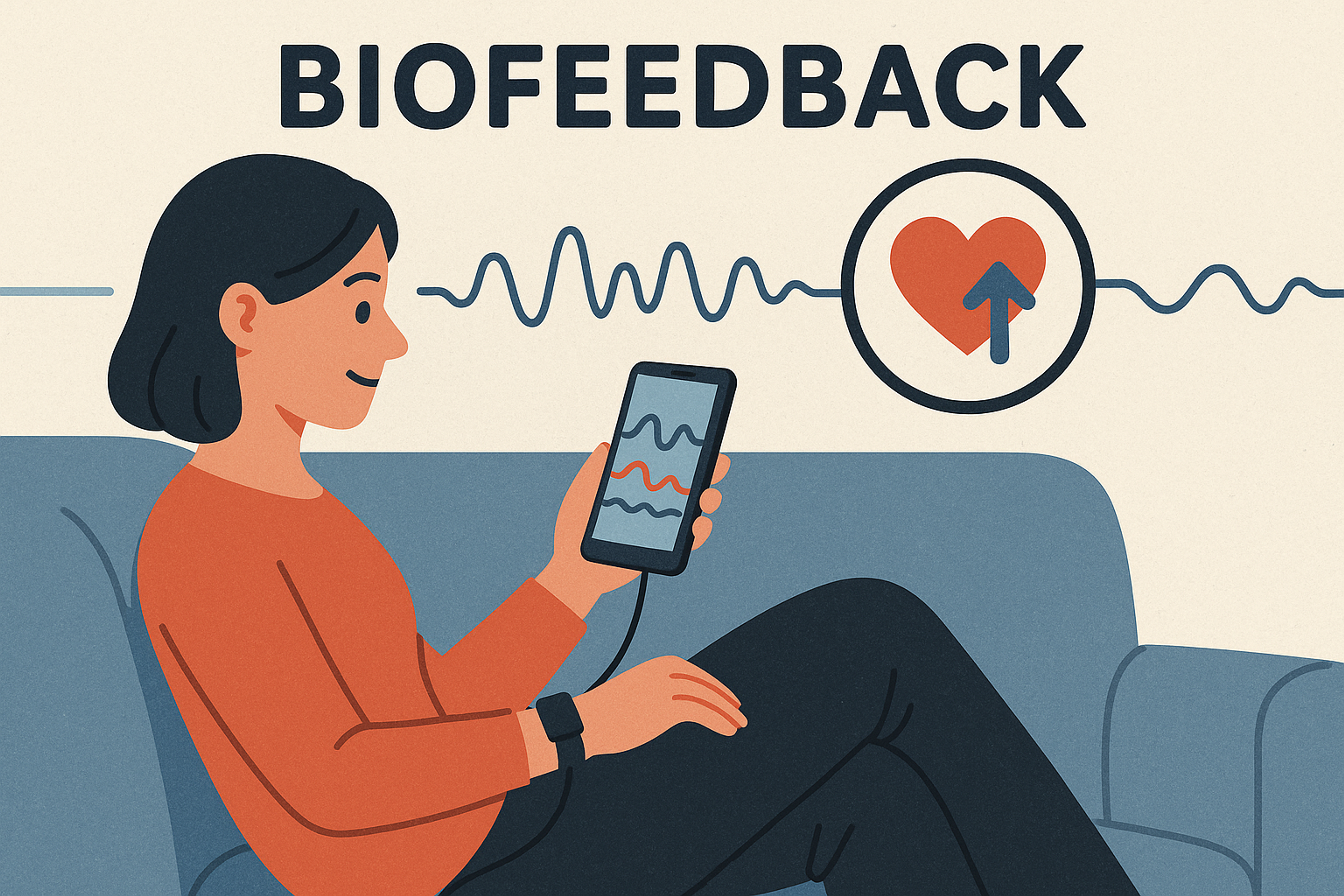
Why do biofeedback?
Understanding how this powerful technique can help you train your nervous system to feel and function better.
What is biofeedback, in simple terms?
At its core, biofeedback is exactly what it sounds like: feeding back information about your body’s own biological signals. Sensors measure things like muscle tension, heart rate, breathing, or skin temperature. These measurements are then transformed into signals you can see, hear, or feel—maybe a graph on a screen, a tone in your headphones, or a gentle vibration.
This feedback loop lets you observe your physiology in real time and, over time, learn to change it. In other words, biofeedback is a way to train your brain and nervous system to self-regulate—sometimes consciously, sometimes below the level of conscious awareness.
Why should anyone consider biofeedback?
Many of us spend years trying to manage stress, tension, or pain with mixed results. We might feel relaxed sometimes, but have no way to know whether our body is actually shifting into a healthier, calmer state.
Biofeedback closes that gap.
It gives you objective signals—numbers and patterns that reveal whether your body truly responds the way you hope. And because you get that feedback instantly, your nervous system learns faster.
Over time, this is how biofeedback helps:
- Greater awareness: You notice subtle shifts in muscle tension, breathing, or heart rhythms.
- Better control: You learn how to guide those signals in a healthier direction.
- Lasting change: With practice, your body remembers how to stay calmer and more regulated, even without equipment.
In this sense, biofeedback is not just a relaxation technique. Relaxation is one strategy you might use—but the real purpose is to train your capacity for self-regulation.
Isn’t it complicated?
It can sound complex, but when you zoom out, it’s surprisingly intuitive.
Think of it like learning any skill: riding a bicycle, playing the piano, or shooting free throws in basketball. You practice, you get immediate information about what worked, and you adjust. The learning happens partly consciously—and partly automatically, through your nervous system’s built-in ability to adapt.
Consistency, curiosity, and patience matter more than any special talent. Some people pick it up quickly. Others take longer. Both are perfectly normal.
What does biofeedback actually feel like?
The experience varies. In one session, you might practice relaxing a tight muscle until the display shows the tension drop. In another, you might try holding a specific muscle contraction to get more precise control (for example, learning to sense when your neck muscles are tensing during computer work).
You might watch a line on a screen smooth out as your heart rate variability improves, or hear a tone change pitch when your breathing slows. This is why biofeedback can feel creative—there are many ways to present the signals. The key is finding an approach that feels motivating rather than stressful.
Is it only about relaxation?
No. Relaxation is often part of biofeedback, but it’s not the whole picture.
Biofeedback helps you train precision and awareness. In sports, for example, athletes sometimes use biofeedback to practice achieving a focused-yet-calm state before performing. While the specific physiological targets in sports can vary—like keeping muscle activation stable or regulating breathing rhythms—the principle is the same: practice + feedback = better control.
What if I’m not good at it?
That’s okay. Just like learning any skill, you don’t have to be “good” at every aspect. Some people connect more easily to breathing exercises; others respond better to muscle-based training or visual feedback.
In fact, combining different feedback types—like heart rate, muscle tension, and breathing—can enhance results. But if juggling them feels overwhelming, it’s perfectly fine to focus on one at a time. Success in biofeedback is not about being perfect; it’s about building awareness and confidence over time.
How do I know it’s working?
Unlike simply guessing whether you’re relaxed, biofeedback gives you measurable evidence. For example:
- Heart rate variability increases (a sign of better nervous system balance)
- Skin temperature rises (reflecting less fight-or-flight activation)
- Muscle tension decreases (or stabilizes if you’re training control)
These numbers don’t just feel reassuring—they help your brain and body learn faster.
Why do biofeedback?
Because it’s an empowering way to take ownership of how you feel and function.
Instead of hoping your stress management tools are working, you see proof. Instead of being stuck in patterns of tension or over-arousal, you train your system to respond differently.
With curiosity, practice, and trust in the process, biofeedback becomes less a “treatment” and more a skill you carry forward—whether your goal is calmer days, better sleep, greater focus, or simply a more resilient nervous system.
Text and illustration developed by Jenny Nesje using ChatGPT’s generative capabilities.